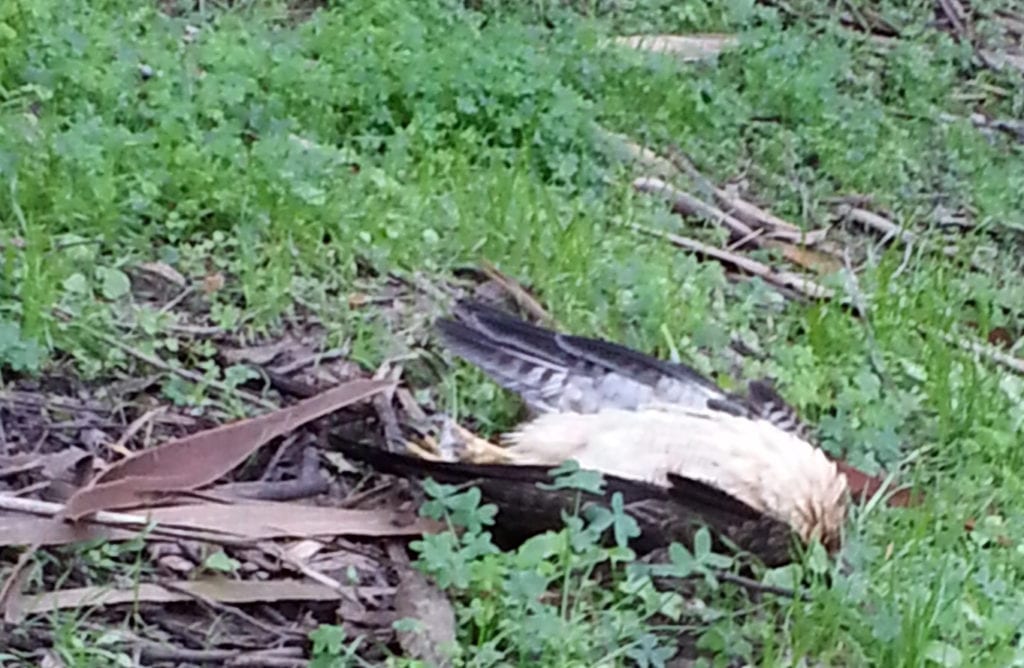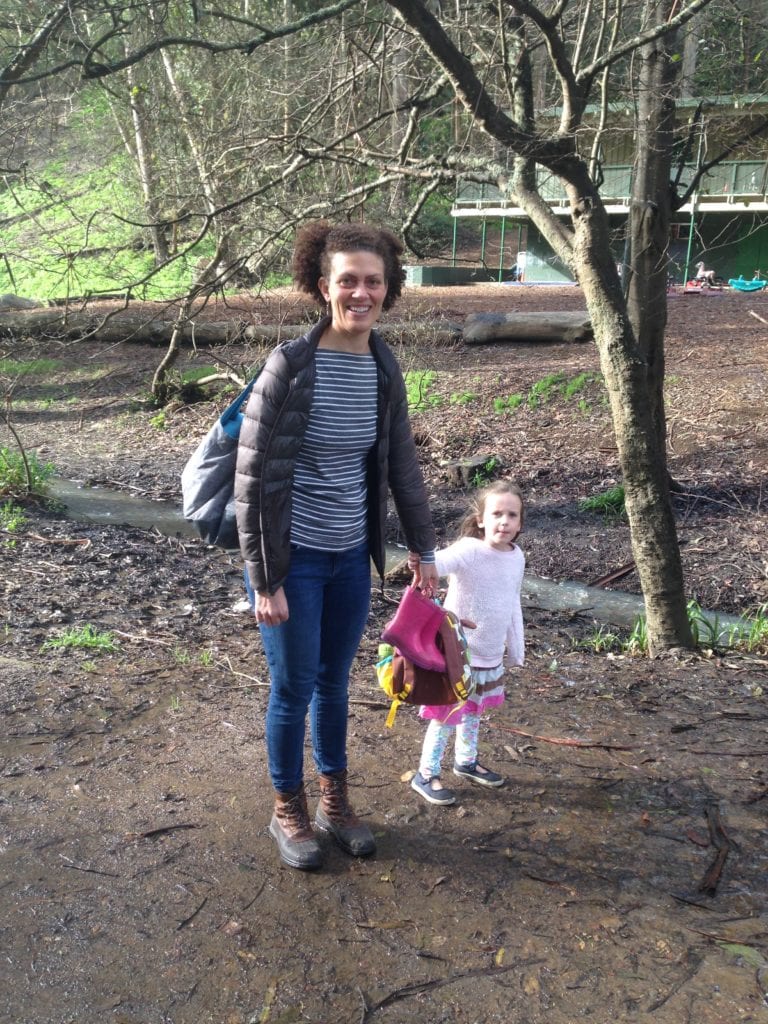
By Murray Schneider
Catherine Symon and her daughter, Natalie, experienced a unique event on January 24, as they left Glen Canyon’s Glenridge Nursery School. After school was dismissed, Symon accompanied four-year old Natalie along a path paralleling Alms Road, a path they’ve taken eight times a week for two years.
“I heard a rustling of branches high in a tree and had enough time to turn around,” said Symon, who lives on Mount Davidson. “Then there was a thud. I thought it might be another great-horned owl such as the one found dead last March.”
That owl was a victim of second generation rodenticide.
Instead, it was a red-tailed hawk, one of the most common birds of prey in North America. A keen-eyed hunter that circles for prey from Canada to Panama, the hawk is known for its brick-colored tail and preference for open spaces with mixed forests and grasslands.

“It was a remarkable sight,” said Symon, who is a medical writer. “It dropped straight down from a tree top about twenty feet from the creek. I thought for sure it was close to death, as it wasn’t moving save for some very slow, shallow breathing.”
The bird remained on its back for five minutes, only yards from Islias Creek, amidst ground stenciled with eucalyptus duff.
“Natalie still remembers its talons and feathers,” said Symon
“I took a photo,” she continued, “but a minute later three unleased dogs approached the slope.”
Sensing the intrusion, the hawk righted itself.
“It hopped to its feet, looked at one dog, then flew off,” she said. “Hopefully, it wasn’t injured; it certainly seemed to fly with no problems.”
Glen Canyon has its share of mice, squirrels, a raccoon or skunk or two, even coyotes, but no one has yet sighted a possum.
The odd behavior was probably part of a territorial display, said Allen Fish, director of the Golden Gate Raptor Observatory.
“I have been seriously watching hawks since 1979, and I have seen only two raptors fall to the ground and heard of a third observed by a colleague,” Fish told the Glen Park News. “The third was two juvenile red-tailed hawks talon-grappling near Woodside. The biologist watched as they locked talons, did some spinning but as they fell, seemed unable to disengage. Both birds hit the ground, one righted itself and flew off, the other died.”
This is the time of year for such territorial displays, Allen Fish explained.
“Red-tailed hawks really go after one another about this time,” emailed Fish. “One of their routines, territorial or pre-nuptial, is to fly near each other, grab talons and spin. This is known as cartwheeling.”
As if doubling down, Catherine Symon experienced a second hawk encounter seven days later on January 31, either combat or courtship.
“It was at Glenridge about 12:30, near the Redwood stand,” said Symon. “A hawk was standing alone on the ground beneath a tree.”
The nursery school was transitioning between its morning and afternoon sessions. All but two children were inside.
Symon posted herself where the Willow Creek Trail begins, about a dozen feet from the downed raptor. She remained there, ready to alert dog walkers to bypass what she believed was another stricken bird. Mame Campbell, the school’s director, gathered the remainder of children and several parents and hustled them inside, then called Animal Control.
The solitary hawk eventually lifted off, winging to the building’s roof, soon joined by another.
While Symon didn’t witness the resumption of the cartwheeling, she’s seen hawks pin wheeling parabolas many times, as her southern-facing windows overlook Glen Park Elementary School, six hundred and fifty feet below.
From this height, she’s witnessed her share of feathered aerial acrobatics.
But her ground level perspective put a new spin on avian gymnastics.
“I have a much better appreciation now for how powerful and agile and, in the case of what Natalie and I witnessed on January 24, the resilience of these birds,” she said. “It looked so stunned, yet it flew away.”
As for Allen Fish, who makes a career studying raptors.
“I think the woman who stood next to the thud witnessed an extremely rare event.”